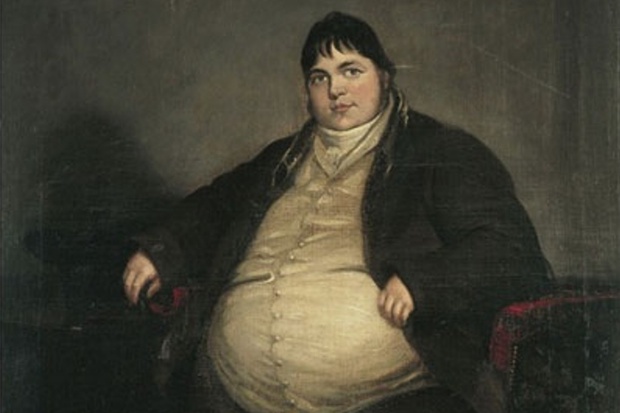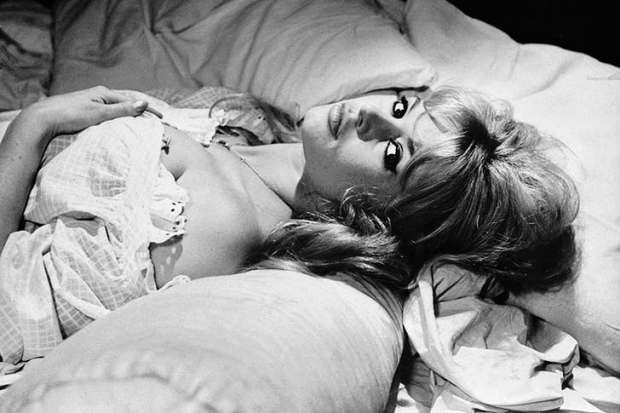When I was a child, growing up in Hertfordshire just after the second world war, my parents employed a cook called Mrs Sharp, who was a very kind and good woman. But she was also extremely fat and had an enormous protruding stomach that impeded her access to the kitchen stove. Lying around in the house at the time was a 78rpm record of a new popular song from the United States called the ‘Too Fat Polka’, of which the recurrent chorus was ‘I don’t want her, you can have her, she’s too fat for me’. The song, recorded by the then famous but now generally forgotten American broadcaster and entertainer Arthur Godfrey, was a big hit in 1947 when people may have been more amused than offended by gentle mockery of the obese.
I was seven or eight years old at the time, and I liked Mrs Sharp very much. But this did not deter me from carrying with great effort a heavy wind-up gramophone from the sitting-room into the kitchen and playing the record on it there for Mrs Sharp to hear. I can’t remember why I did this, but I feel sure I didn’t mean to offend her. Maybe I thought she would be amused. In any case — even if she wasn’t amused, and it’s hard to believe that she could have been — she showed no sign of anger or resentment and treated me with her usual benevolence. Perhaps she cheerfully accepted her unusual size and thought it quite normal that other people should refer to it.
In 1947 it must have been difficult to offend people, for it was a good year for political incorrectness. Another hit then was a song that started ‘Bongo, bongo, bongo. I don’t want to leave the Congo, oh no, no, no, no’ and pretended to mock the missionaries who preached the virtues of western civilisation so successfully to Africans that, according to the lyrics, ‘every educated savage is hollerin’ from a bamboo tree that civilisation is a thing for me to see’. Nearly 40 years later the late Tory minister Alan Clark created a political furore by referring to Africa as ‘bongo bongo land’, as did the Ukip MEP Godfrey Bloom earlier this year. And also in 1947 there arrived in London the Irving Berlin musical Annie Get Your Gun, in which one of the hit songs, ‘I’m an Indian Too’, is now usually removed from revivals of the show because it is thought that it could offend Native Americans with its parodic references to white people’s clichés about them, as in the lines ‘Just like Rising Moon, Falling Pants, Running Nose, Like those Indians, I’m an Indian too’.
One reason why there were no objections to such songs at the time was presumably that the objects of the disrespect, whether Africans or Native Americans, wouldn’t have known that the songs existed and, anyway, even if they had, wouldn’t have known how to make their objections heard. But fat white people were in a different category and could, if they had felt like it, have shown their displeasure at the popularity of the ‘Too Fat Polka’. They could have taken the view, reportedly common among fat people today, that their size was not their fault and should be treated as an unfortunate disease (see Dr Max Pemberton’s recent cover story in The Spectator). But then there wasn’t a national obesity crisis, and fat people might have felt a good deal less embarrassed by their condition than they do now. Because there were so many fewer of them than there are today, and placed no burden on the National Health Service, they might even have felt a bit special.
Fatness wasn’t always considered a bad thing. ‘Let me have men about me that are fat,’ said Julius Caesar in Shakespeare’s play; ‘Sleek-headed men and such as sleep o’nights.’ And, of course, in parts of 19th-century Africa obesity was considered not only a sign of wealth but also an essential feature of ideal beauty. As the explorer John Speke found to his astonishment at the court of the king, Rumanika, in Northern Uganda, the king’s chief wife was so fat that ‘she could not rise; and so large were her arms that, between the joints, the flesh hung down like large, loose-stuffed puddings’. And yet, in Speke’s opinion, she had ‘a pleasing beauty’.
Also in 1947, I broke a car journey to Scotland with my father to spend a night at the George Hotel at Stamford in Lincolnshire where Daniel Lambert, ‘the fat man of Stamford’, died in 1809, weighing 52 stone. Lambert, an intelligent man widely respected for his expertise with sporting animals such as dogs, horses and fighting cocks, got so heavy that he could no longer earn a living except by exhibiting himself to the public. Those were days when people were fascinated by freaks, but at the same time respected them as human beings. Lambert retired rich and admired, as did the original Siamese twins of North Carolina whom even the British prime minister, the Duke of Wellington, went to see when they visited London in 1829. At least freaks could make money in those days.
Got something to add? Join the discussion and comment below.
Get 10 issues for just $10
Subscribe to The Spectator Australia today for the next 10 magazine issues, plus full online access, for just $10.
You might disagree with half of it, but you’ll enjoy reading all of it. Try your first month for free, then just $2 a week for the remainder of your first year.













Comments
Don't miss out
Join the conversation with other Spectator Australia readers. Subscribe to leave a comment.
SUBSCRIBEAlready a subscriber? Log in